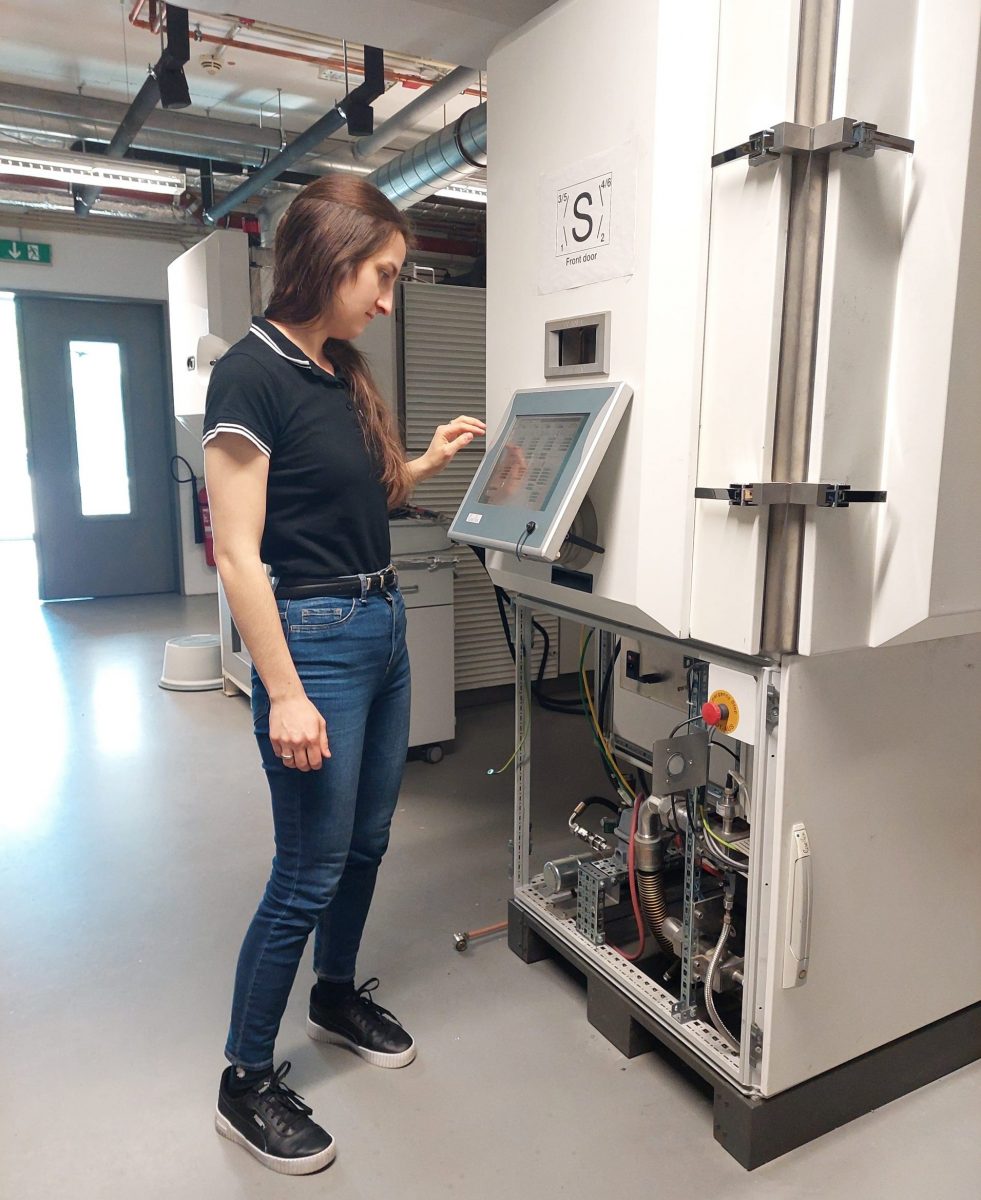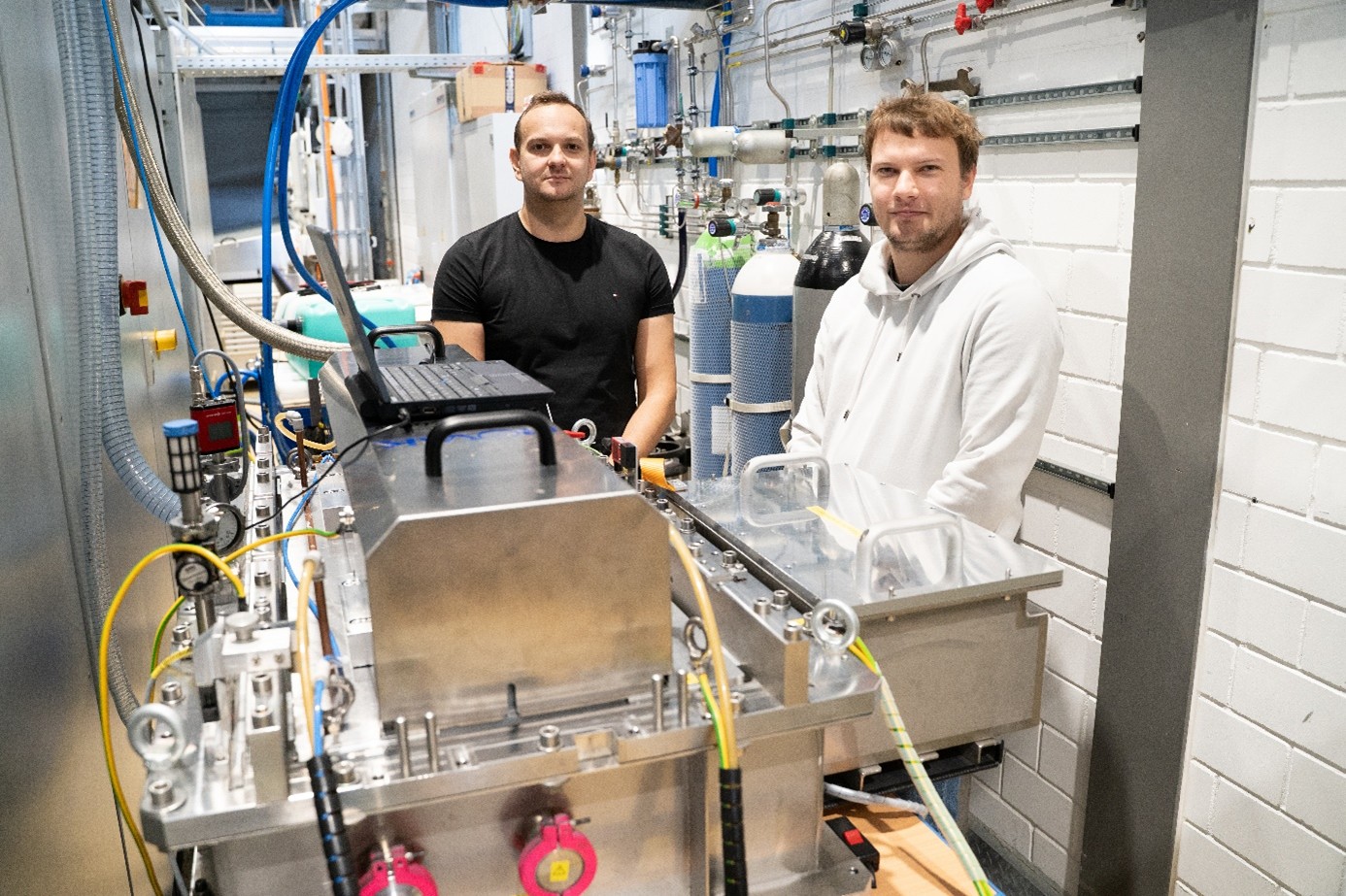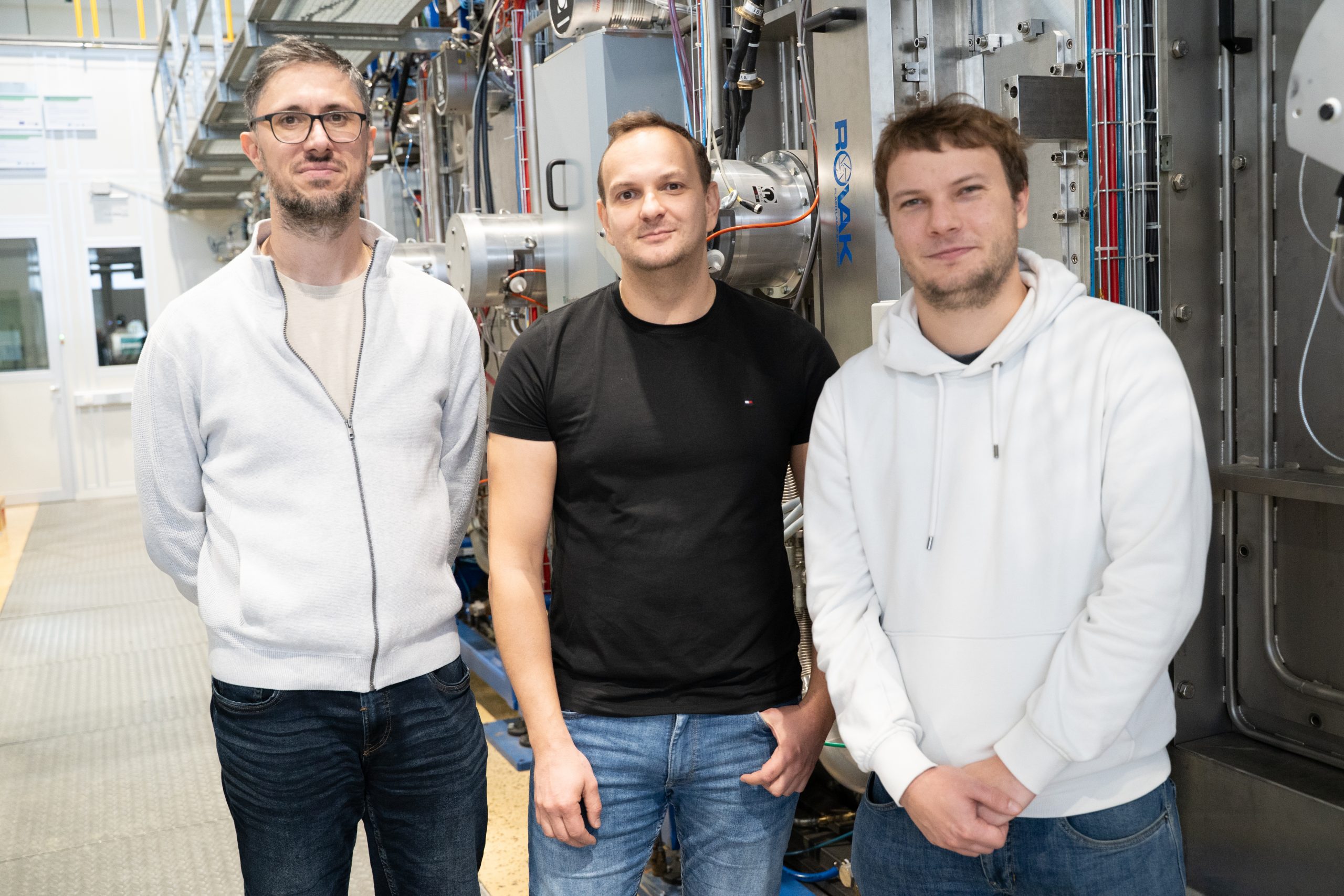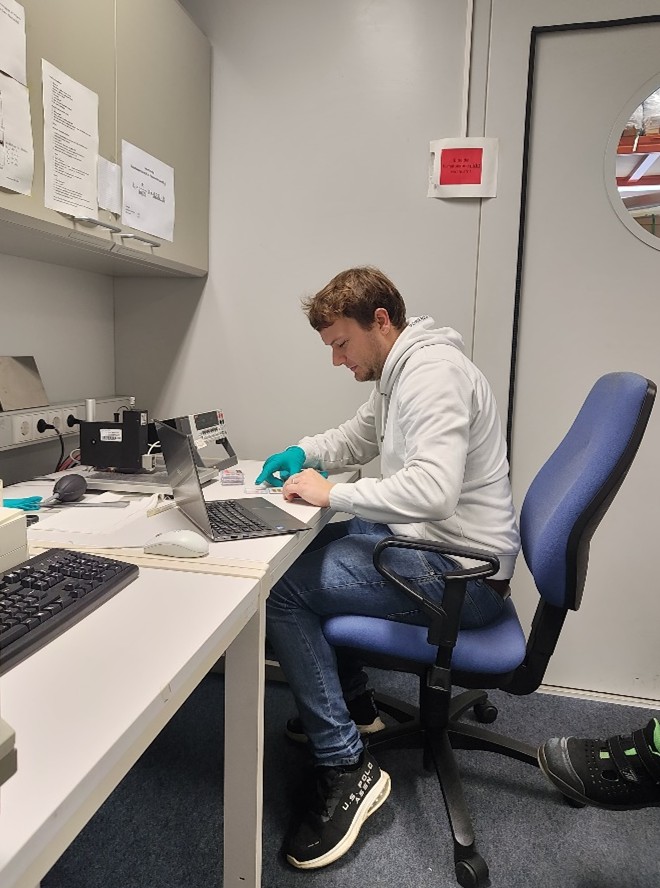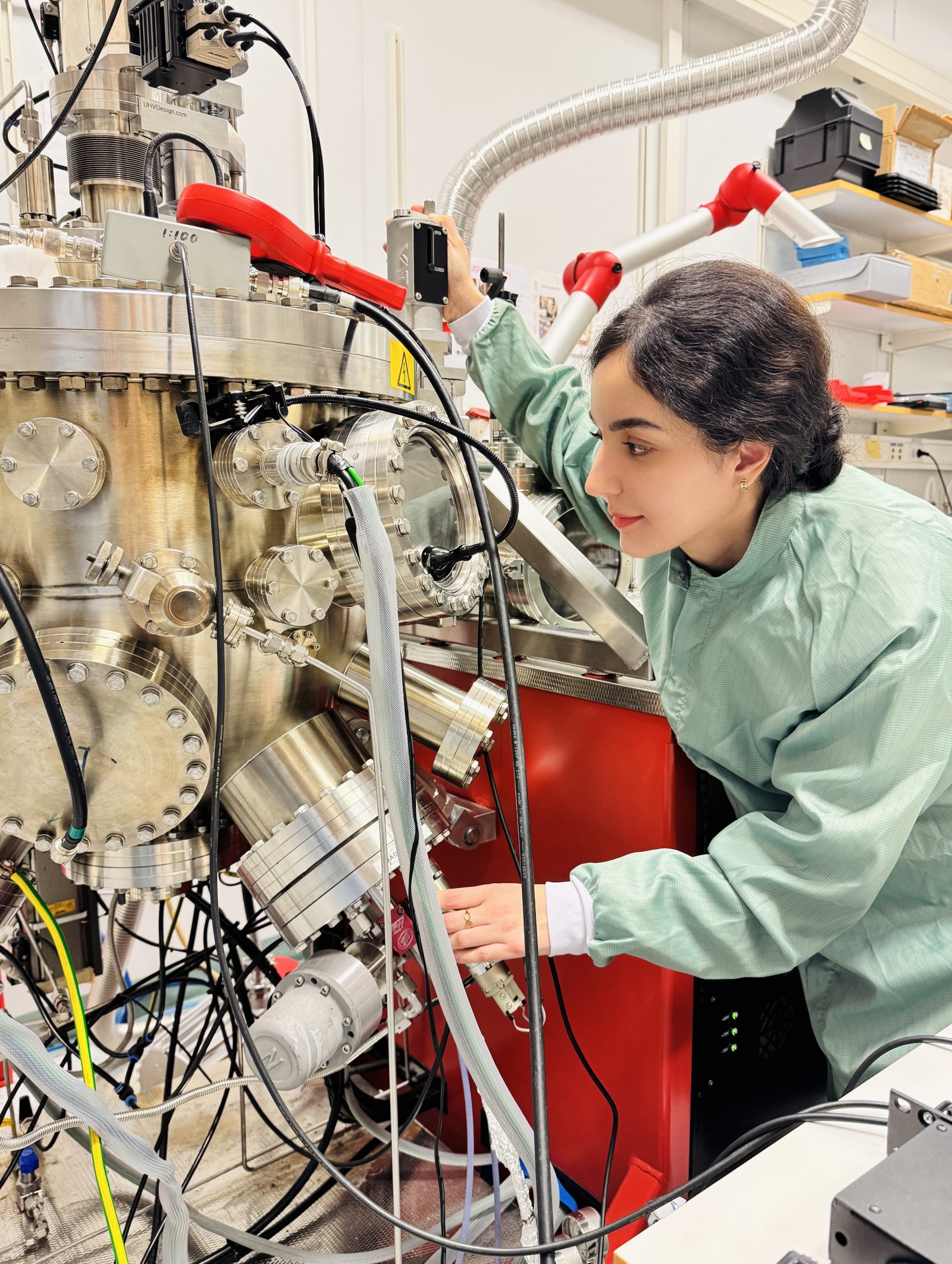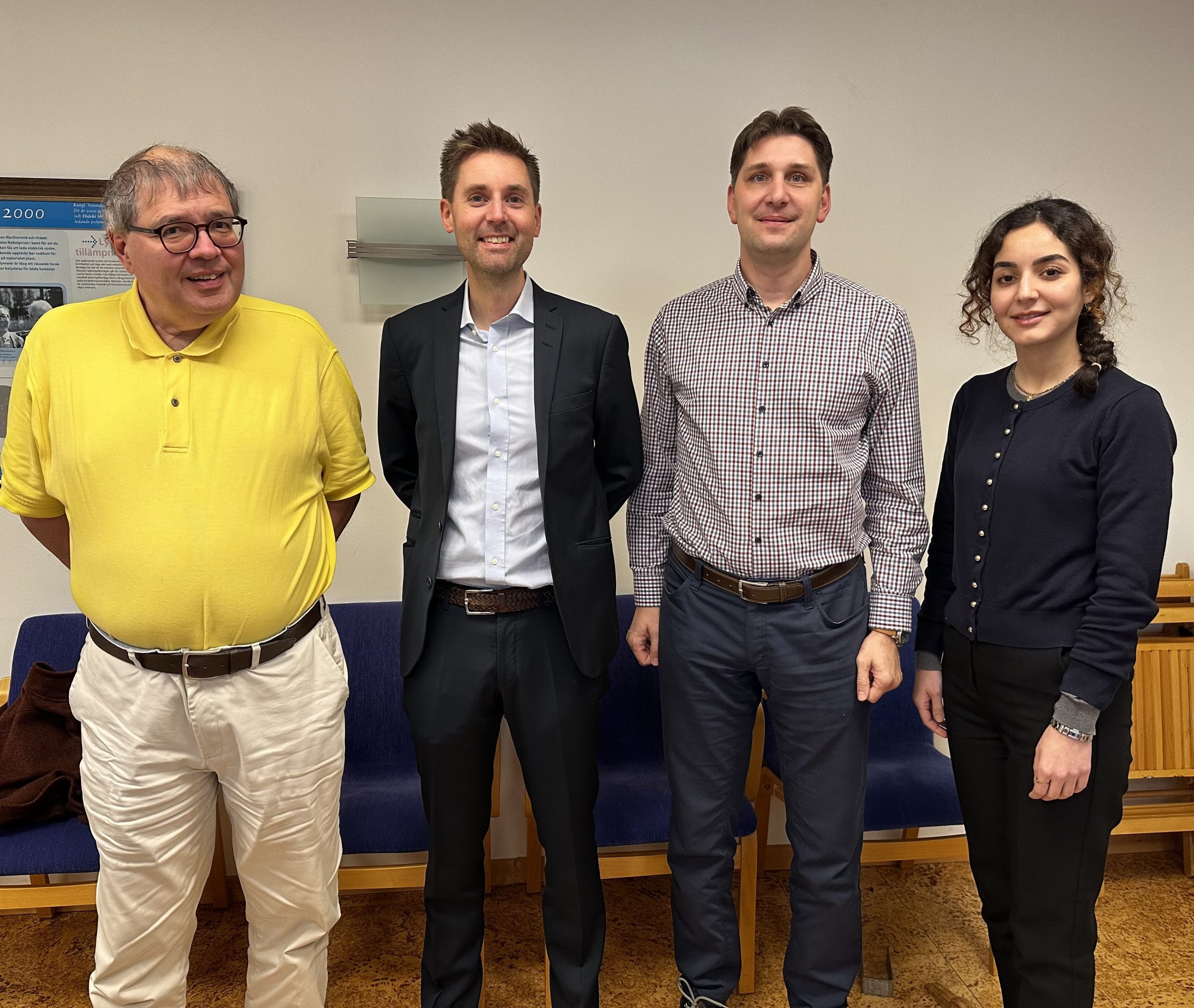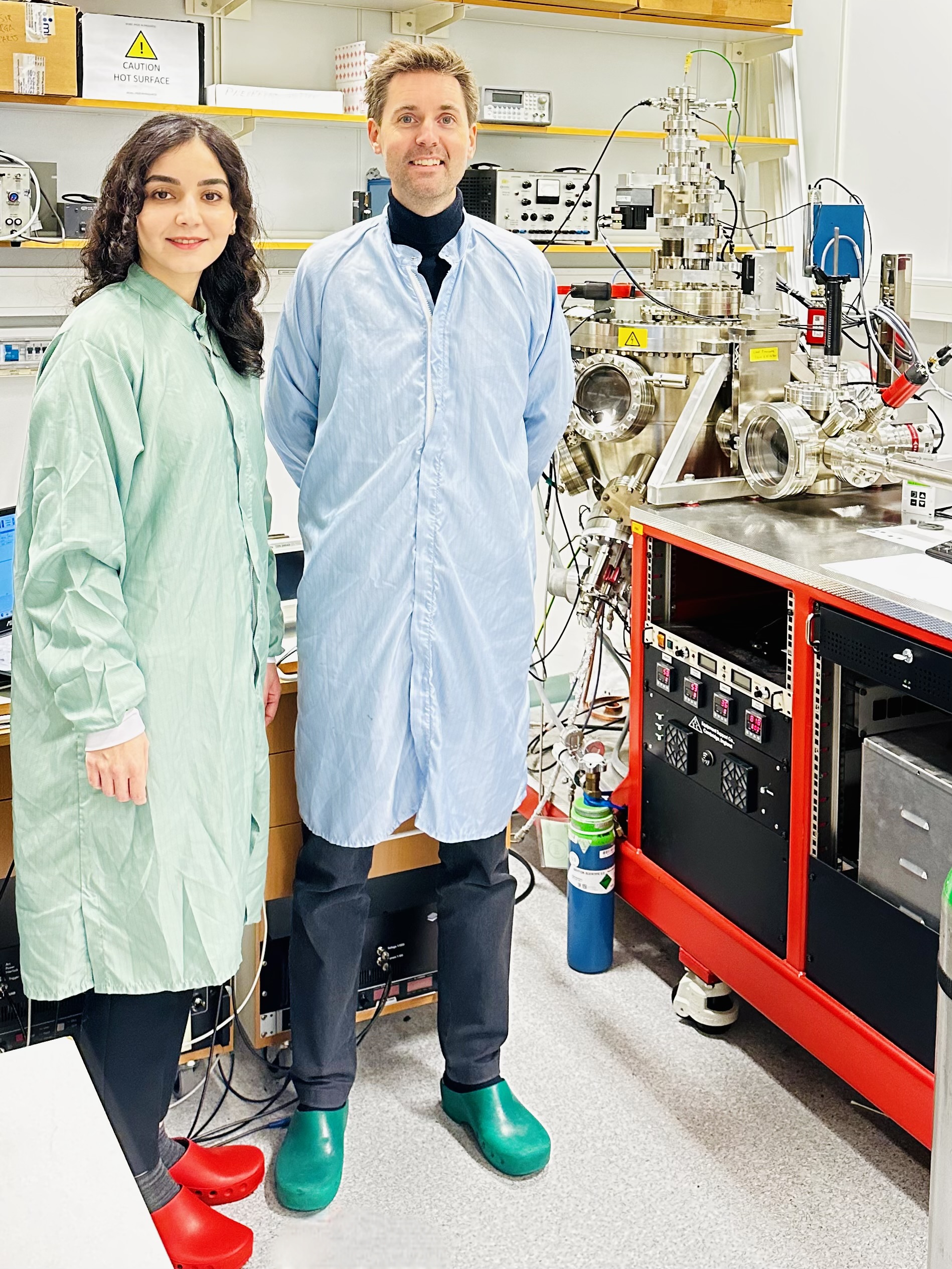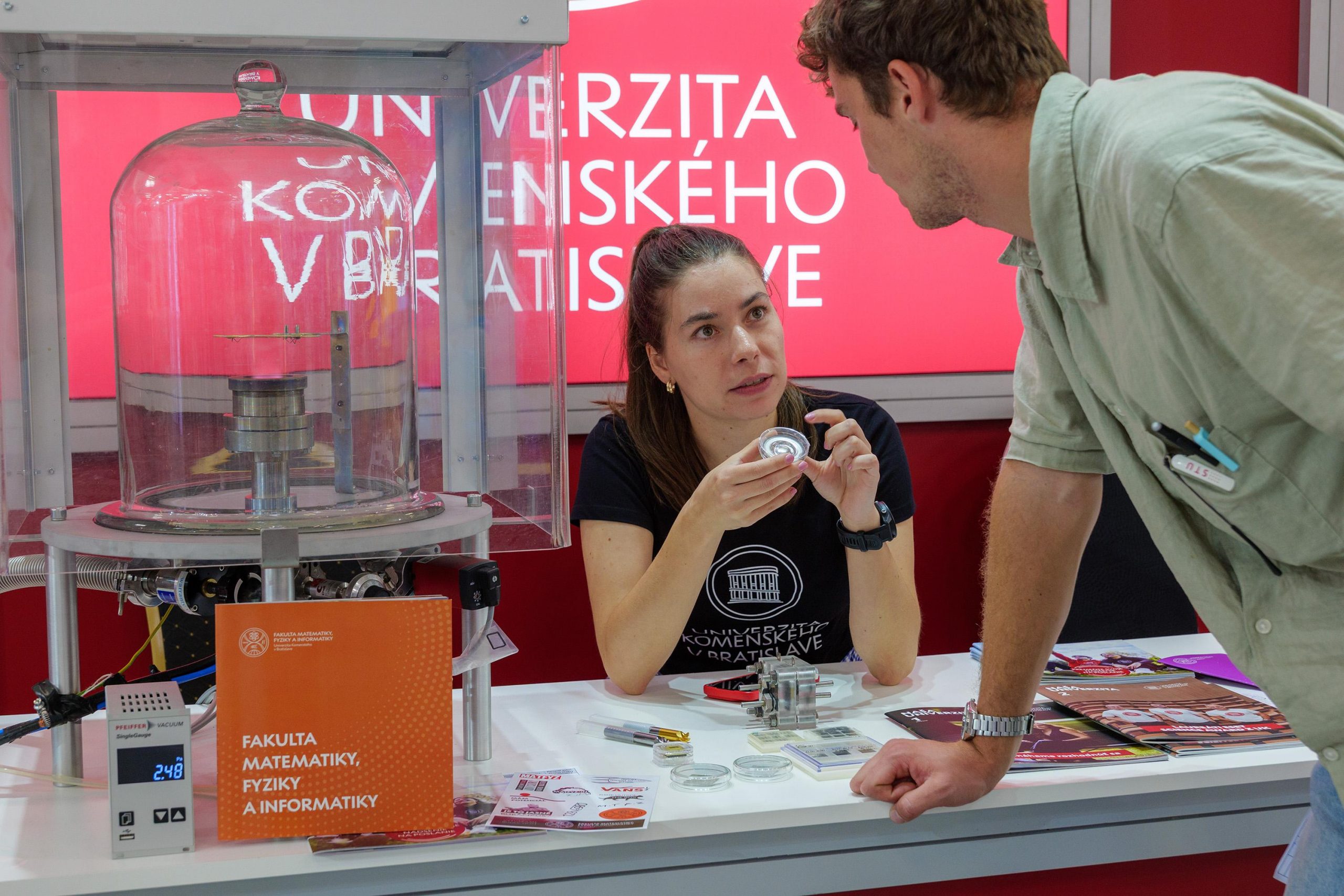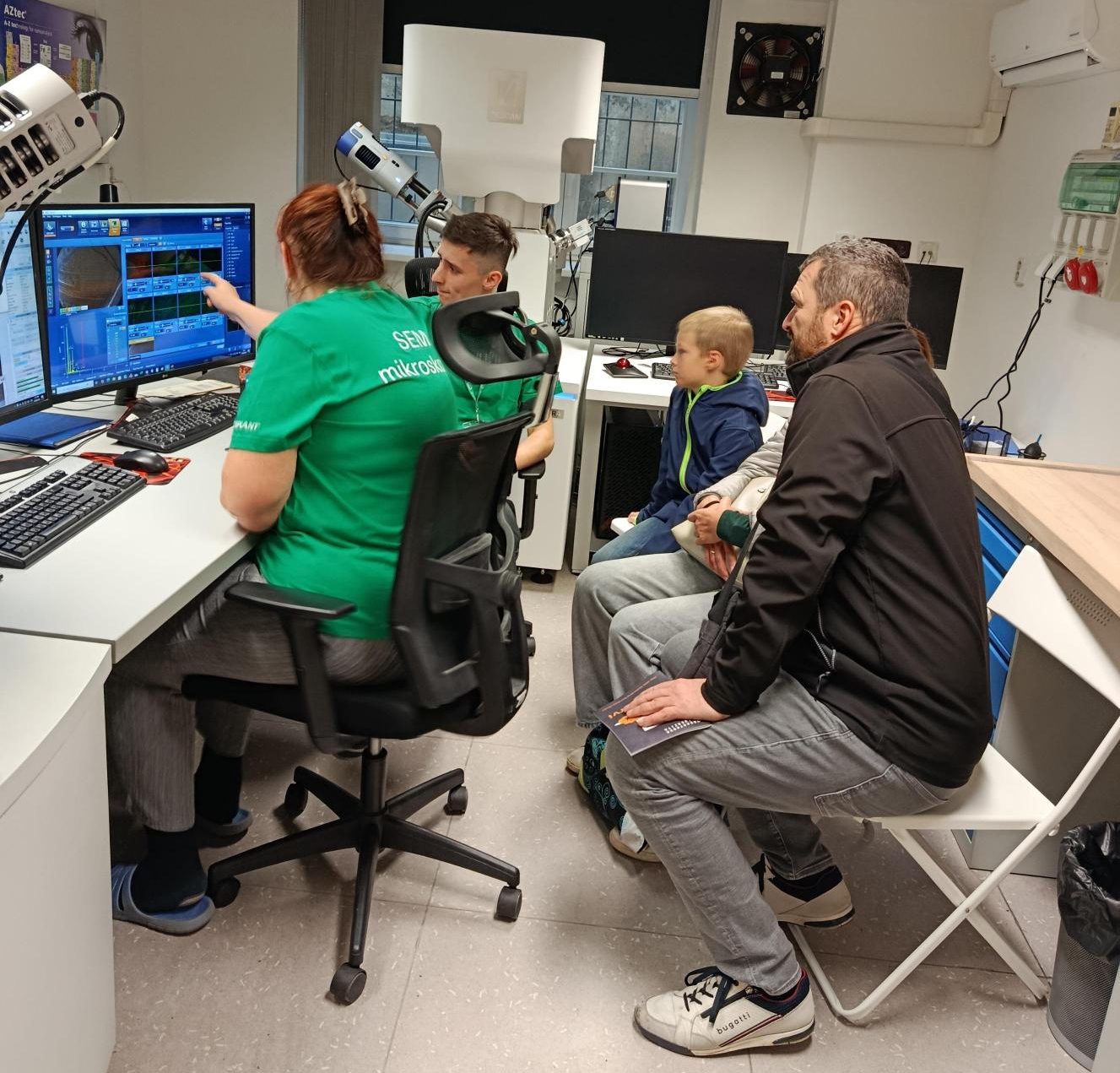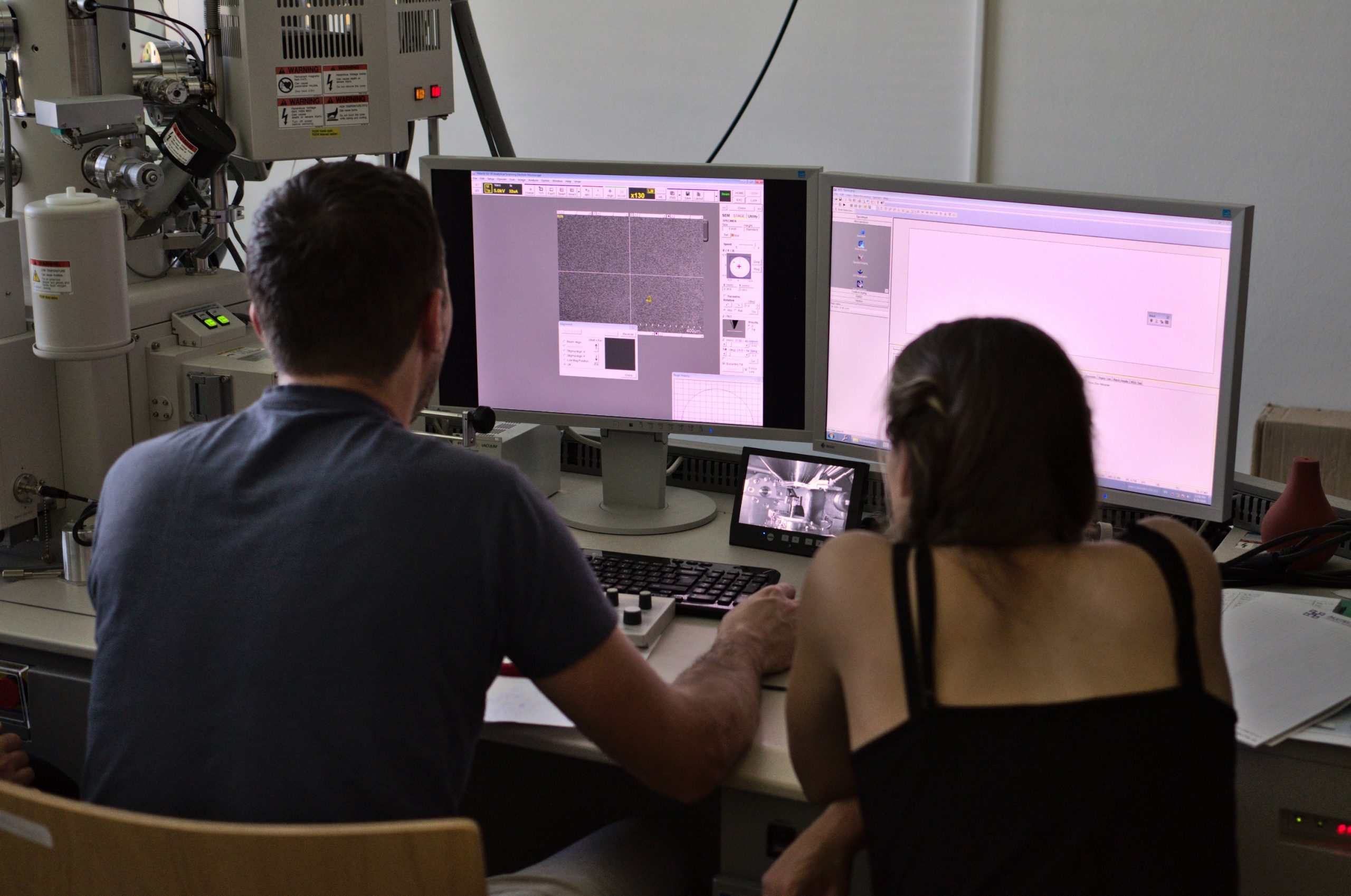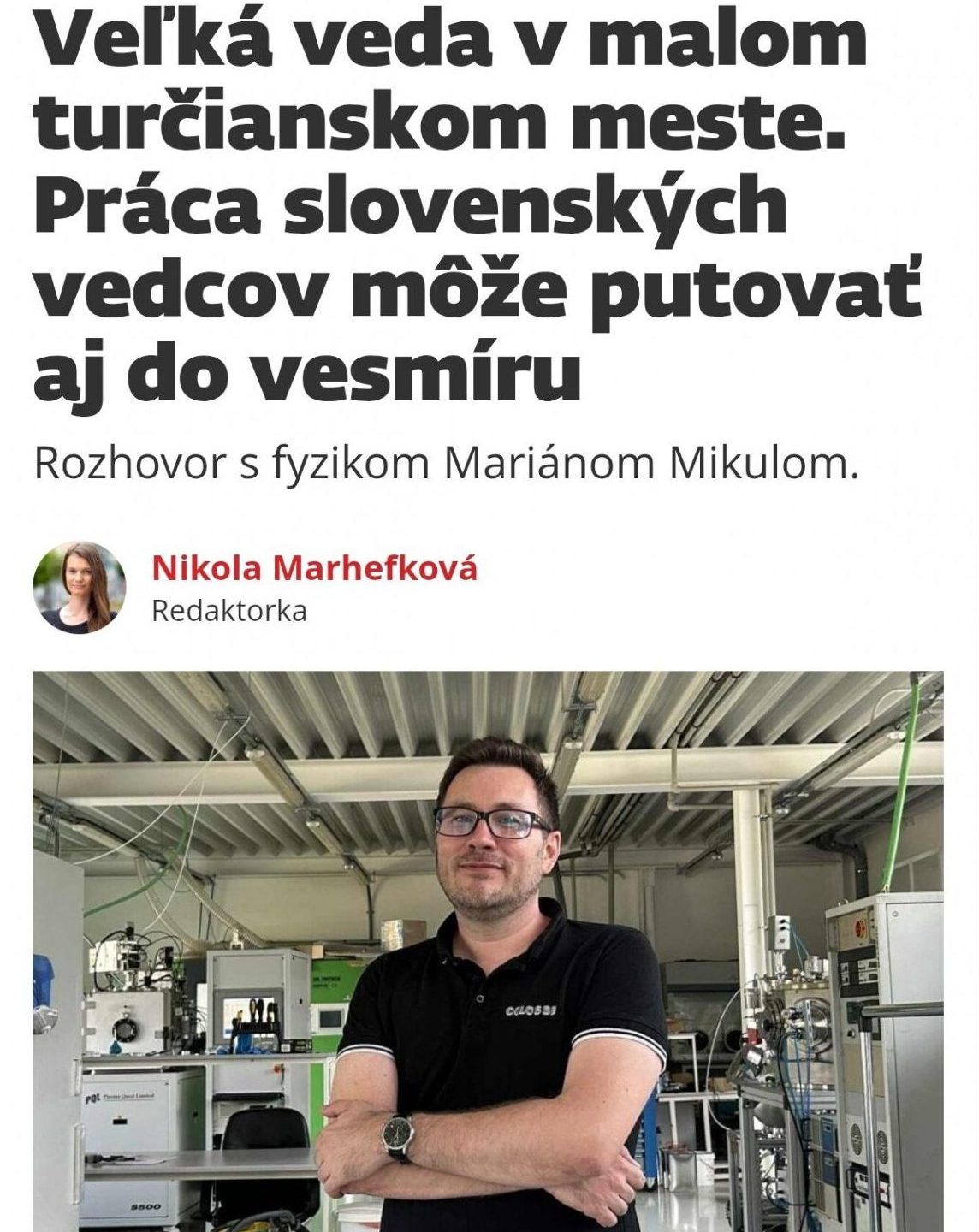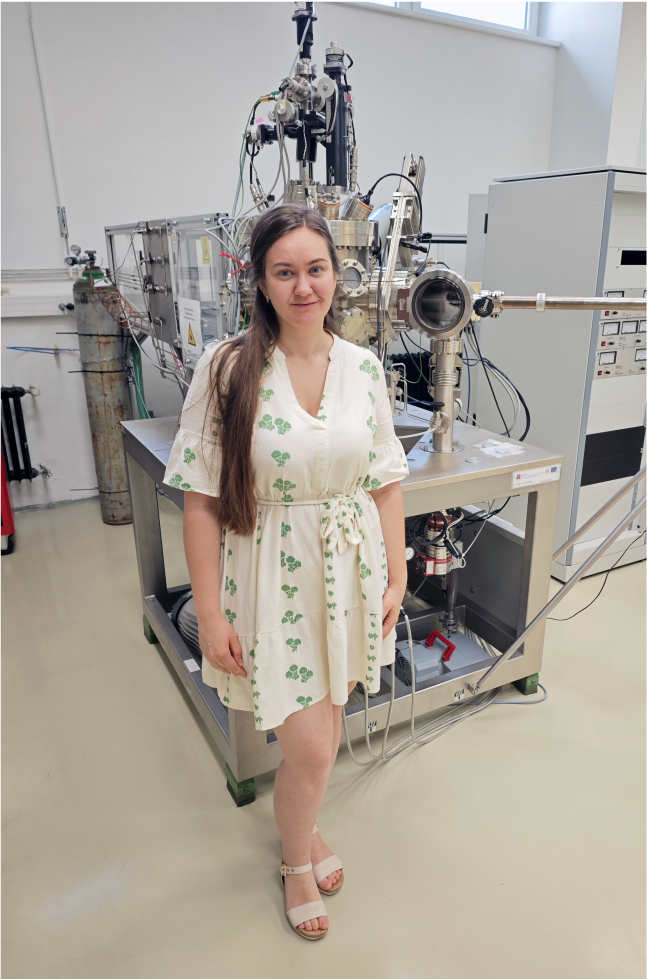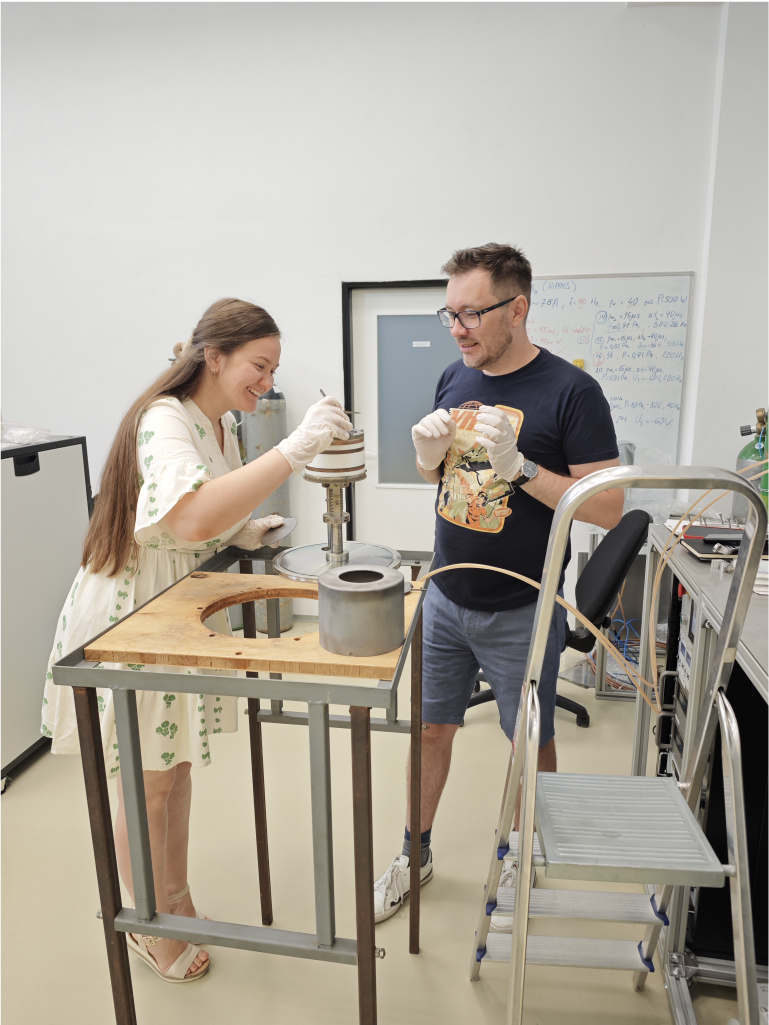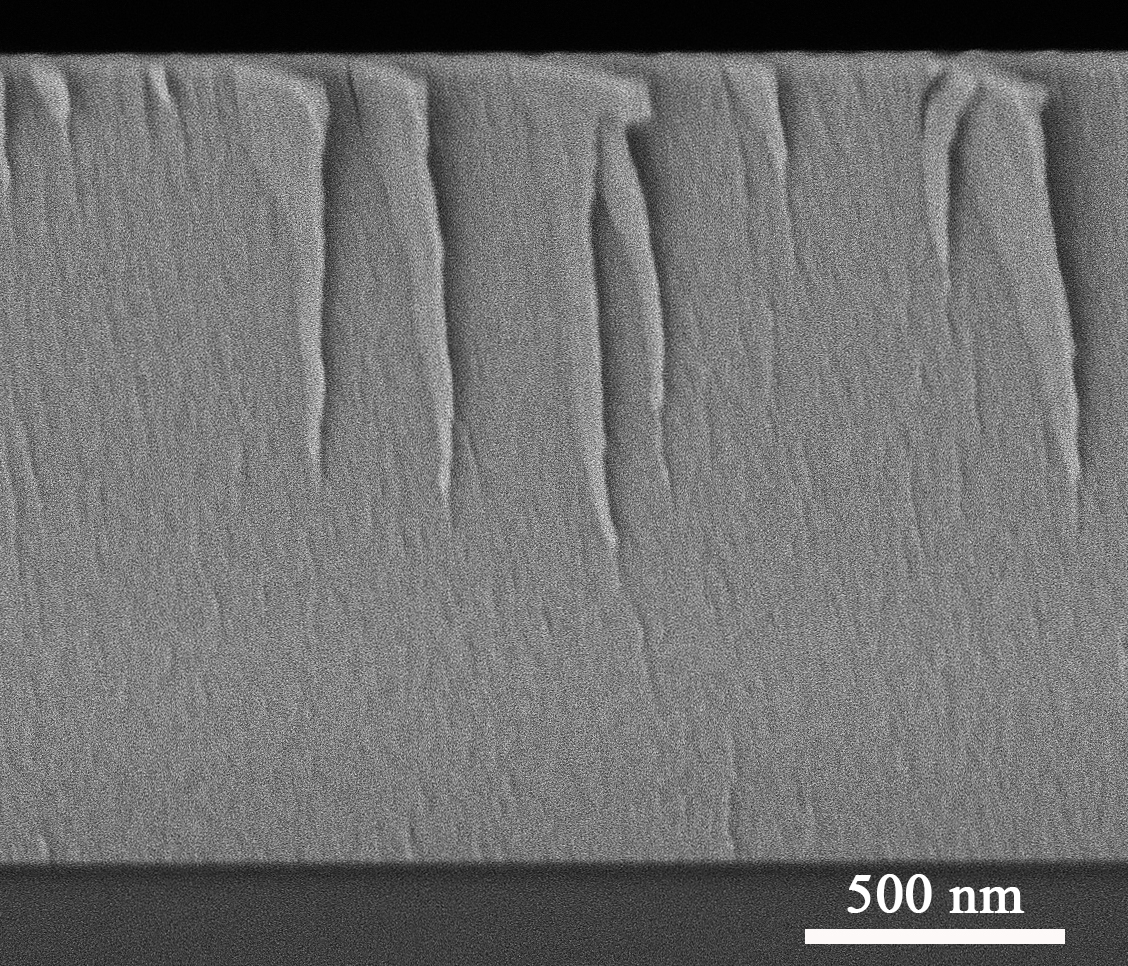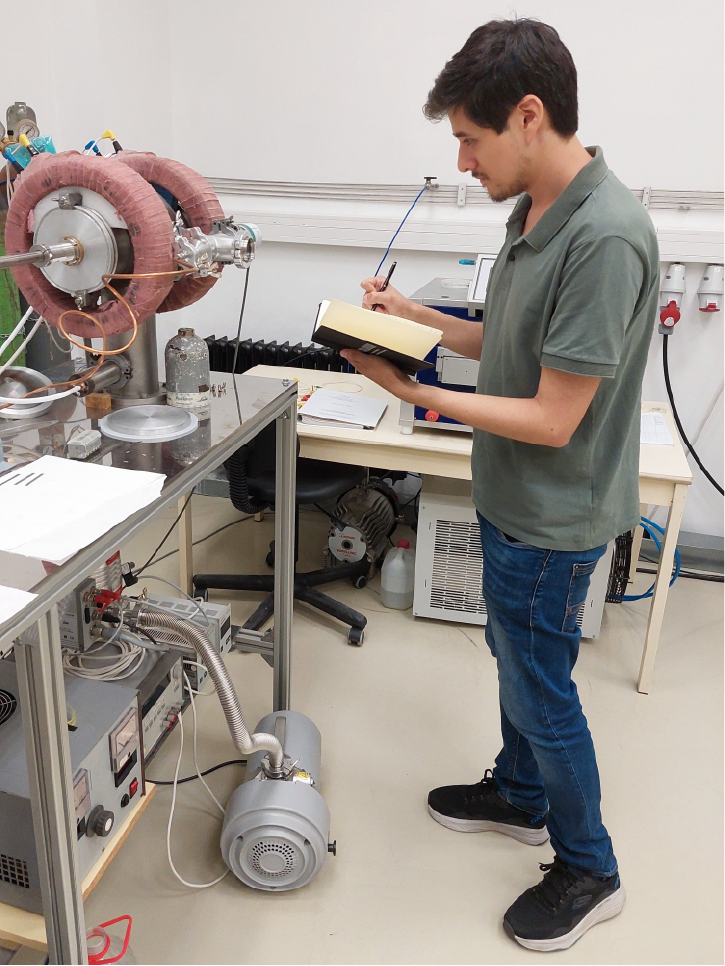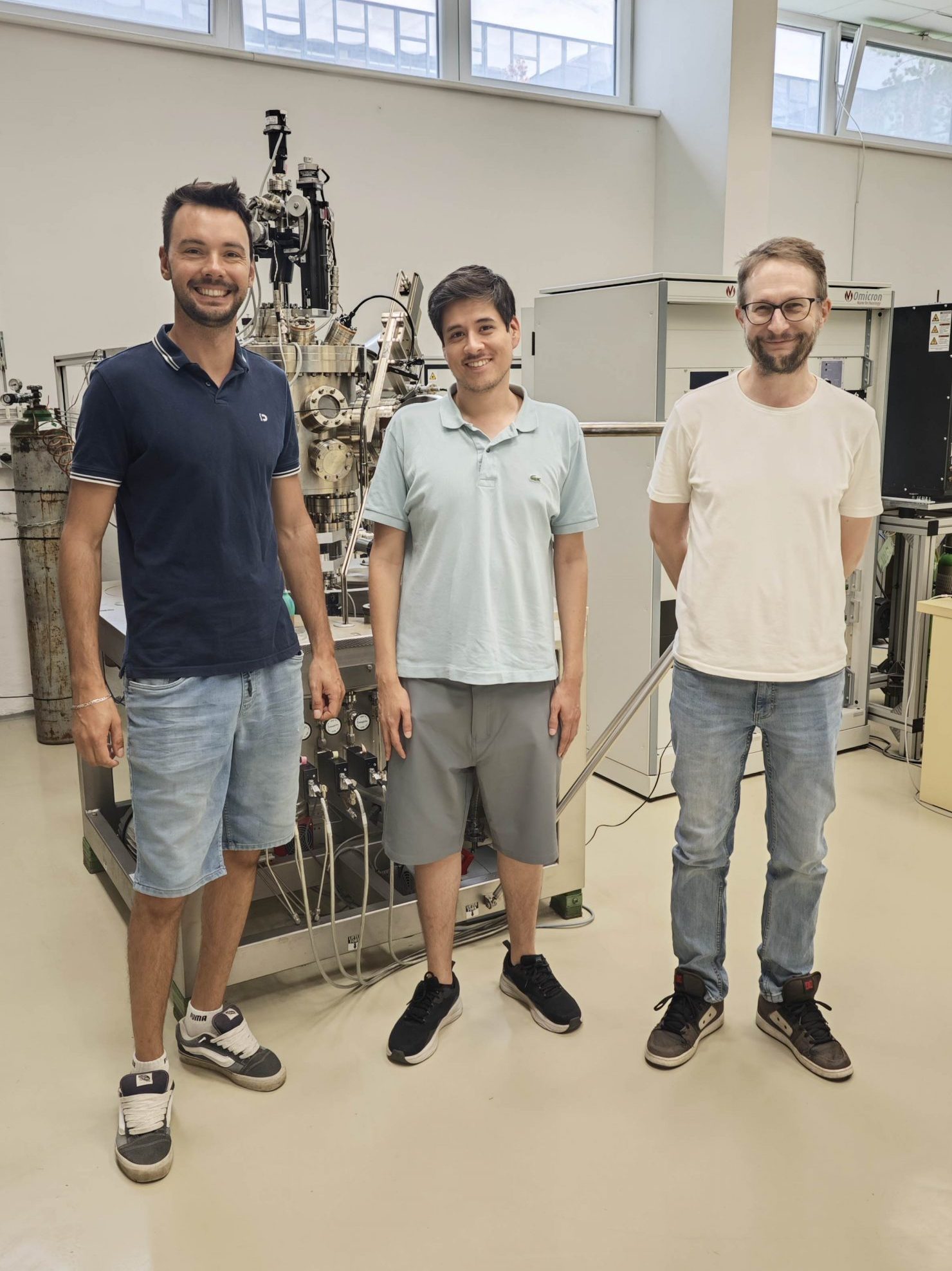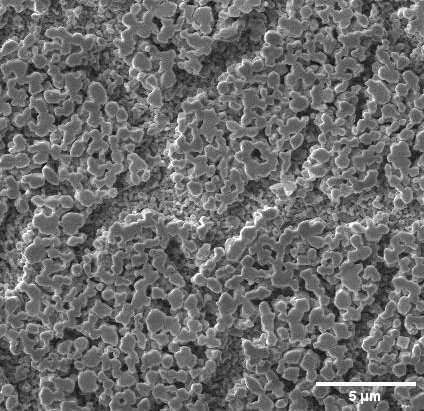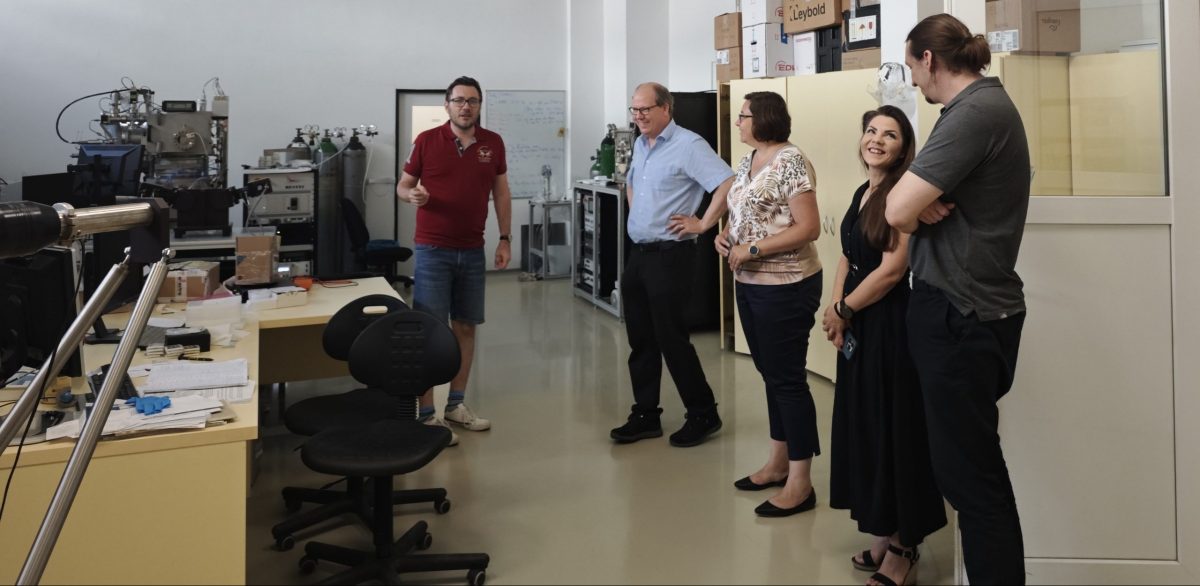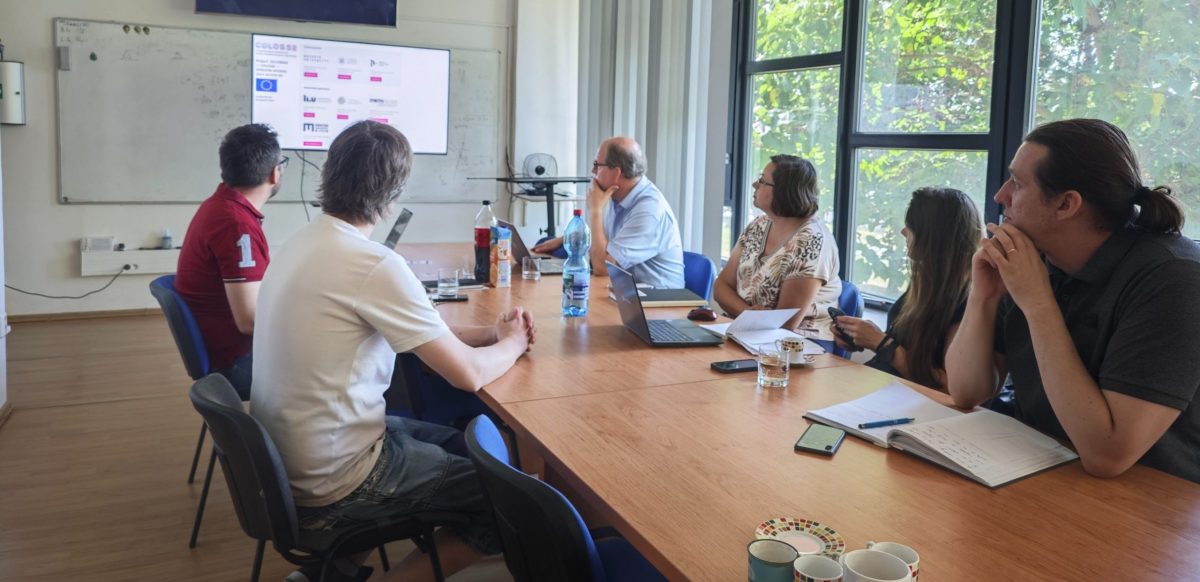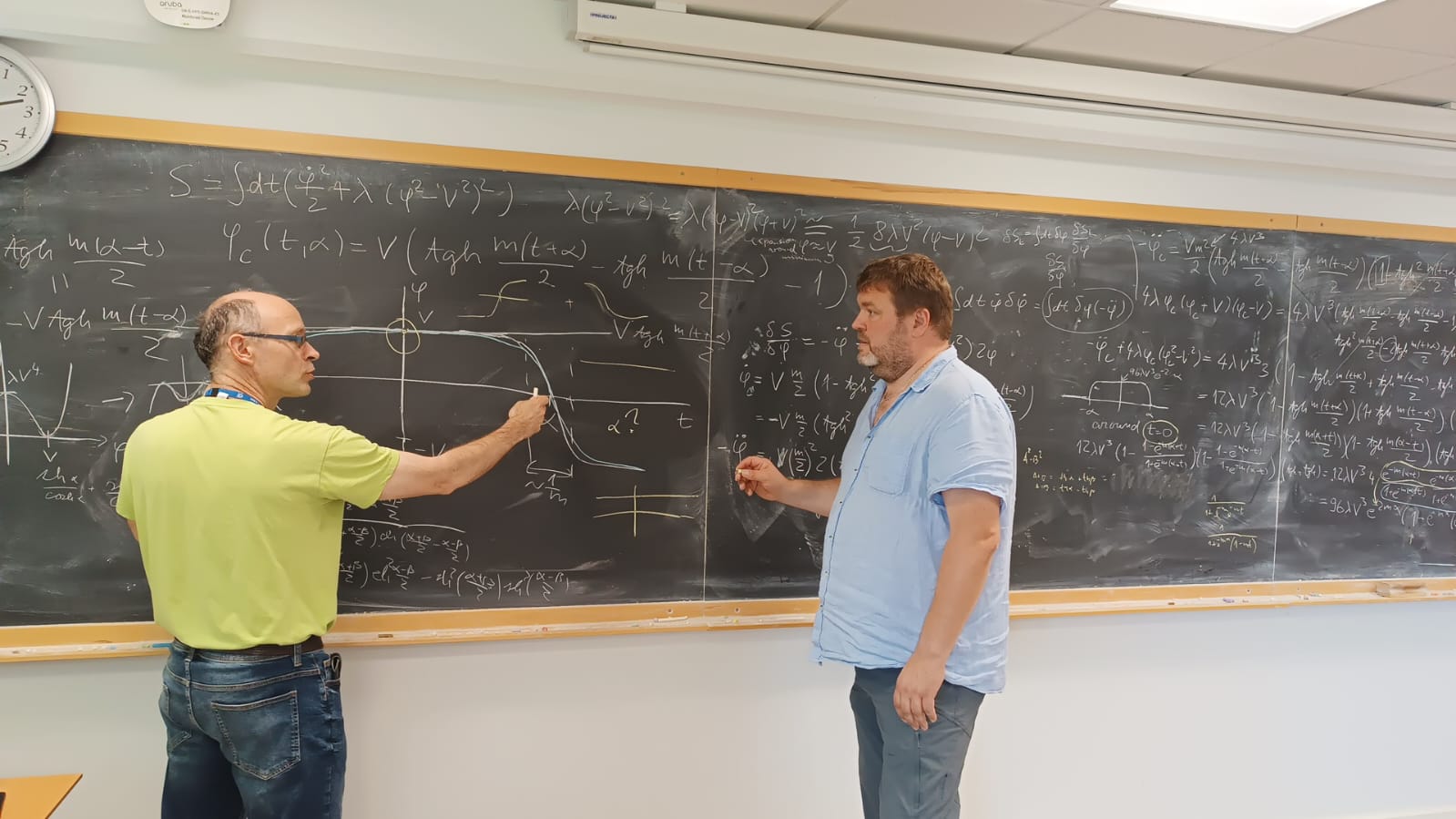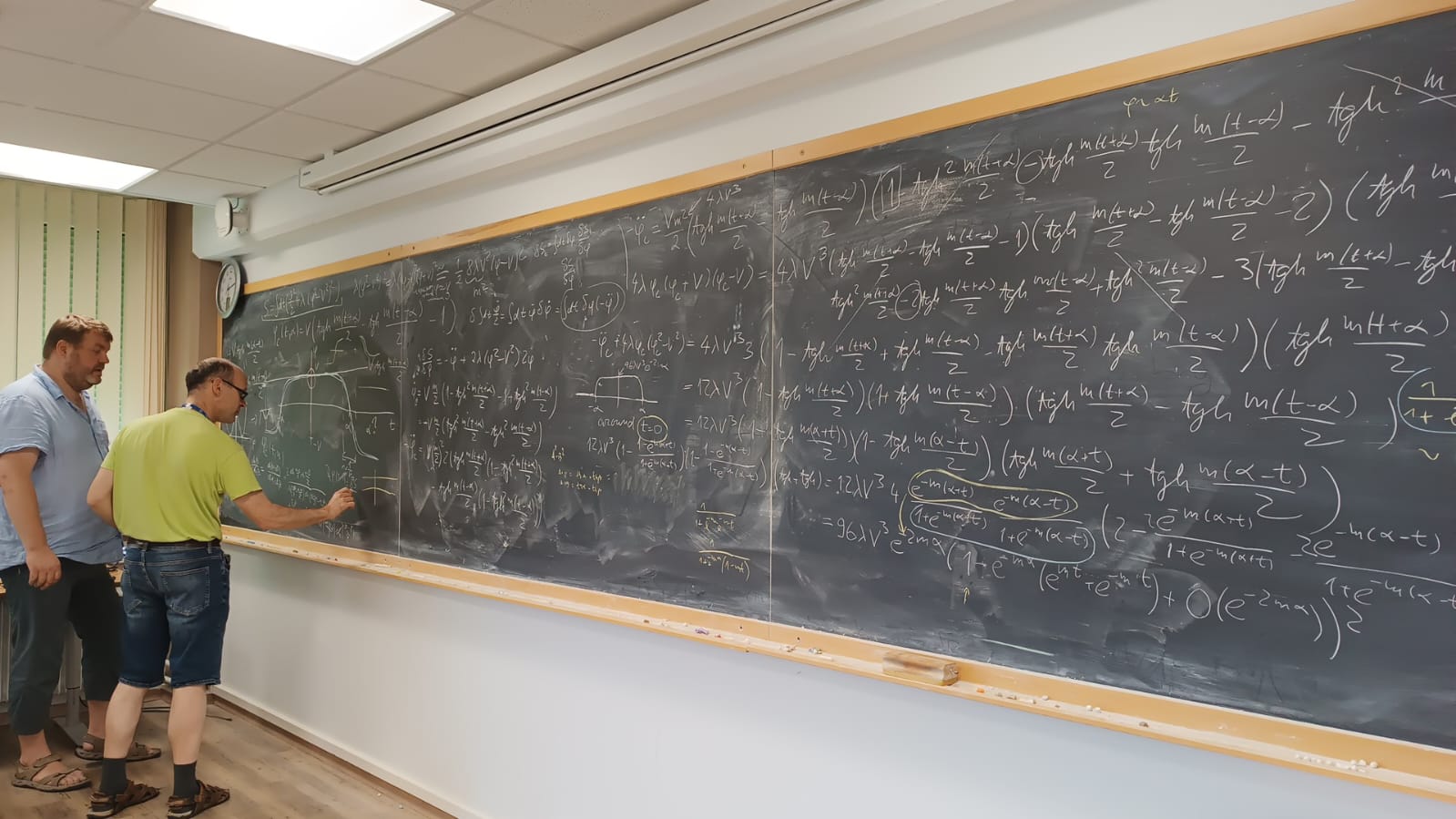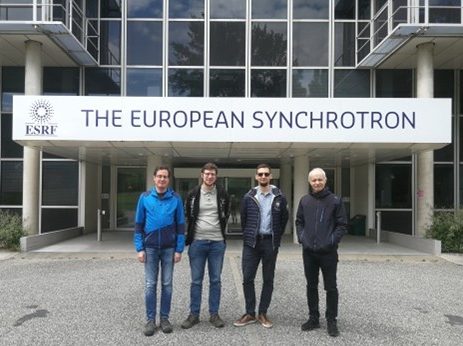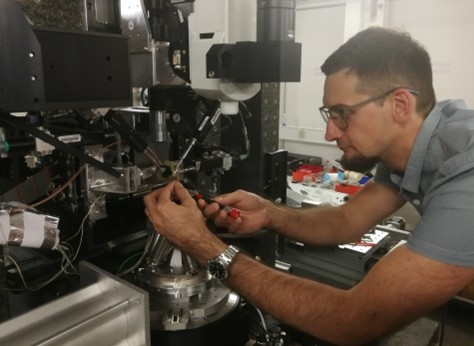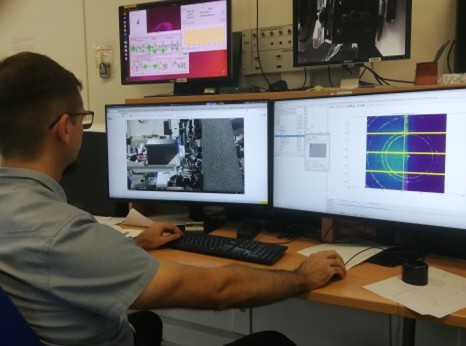News
Research Stay Focused on EFISH Plasma Diagnostics
Dr. Martina Mrkvičková, from the Plasma Diagnostics and Modelling research group at the Department of Plasma Physics and Technology and the CEPLANT center (Masaryk University), took the opportunity offered by COLOSSE to complete a two‑week research stay at the e Experimental Physics V group at Ruhr University Bochum, hosted by Prof. Uwe Czarnetzki. The main goal of the collaboration was the transfer of knowledge in plasma diagnostics, particularly in the Electric-field-Induced Second Harmonic Generation (EFISH) experimental method. This method utilizes a laser beam to determine the electric field in gaseous environments, including plasma. During her visit, she worked with Dr. Inna Orel and Dr. Nikita Lepikhin on applying this method to measure temporally resolved electric fields in a nanosecond plasma jet operated in a He/O₂ gas mixture.
In addition to the standard approach, the team experimented with a recently developed upgrade to the EFISH method proposed by Dr. Lepikhin: increasing the EFISH sensitivity using an optical parametric amplifier (OPA). This upgrade amplifies the detected signal by orders of magnitude, improving sensitivity and reducing the time and cost of measurements.
Beyond the immediate outcomes of the stay, such as the potential use of the upgraded method to improve measurements of electric fields in various plasmas at her home department, Martina also gained numerous valuable ideas for practical improvements in daily laser laboratory work. The experience also opened up opportunities for future collaboration with Dr. Orel and Dr. Lepikhin.
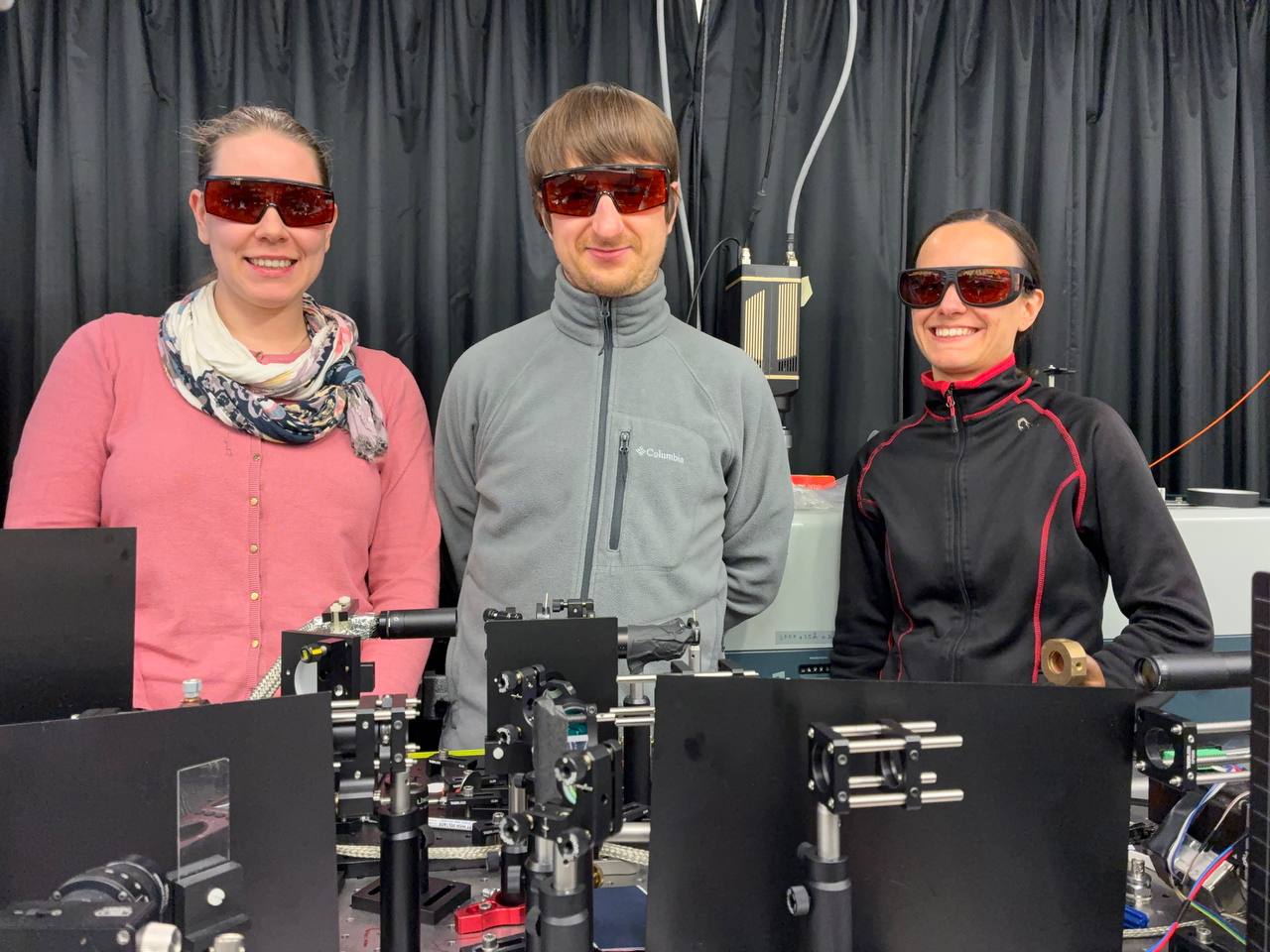
Research Stay at Fraunhofer FEP: Exploring Flash Lamp Annealing for Cu₂O Thin Films
Czech–Swedish Collaboration in Semiconductor Thin-Film Research
A seven-week internship was completed at Linköping University by PhD student Mina Farahani, focusing on the deposition of semiconductor thin films. The work was carried out under the supervision of Dr. Tomas Kozák from the University of West Bohemia in Pilsen and Dr. Daniel Lundin at Linköping University.
The project involved investigating and optimizing thin-film deposition processes, with a focus on the influence of plasma parameters and deposition conditions on the structural properties of semiconductor materials. Experimental preparation, deposition procedures, and preliminary characterization were conducted as part of the study, contributing to an understanding of and improvements in the deposition process.
This activity also strengthened the collaboration between the University of West Bohemia in Pilsen and Linköping University, supporting continued joint research efforts in the field of plasma-assisted thin-film technologies.
Beyond Papers and Proposals
Besides tackling cutting-edge scientific challenges, writing publications, and preparing grant proposals, the COLOSSE consortium – Comenius University Bratislava, Masaryk University (Brno), and University of West Bohemia in Pilsen – is on a mission to bring plasma physics and materials research closer to the scientists of tomorrow.
At the recent Gaudeamus Higher Education Fair, Comenius University showcased a custom-made, fully transparent magnetron sputtering system. Visitors could watch deposition in real time, explore every component, and experience advanced materials research firsthand.
Colleagues from Masaryk University participated in the Researchers’ Night, where they showcased an electron microscope and demonstrated its operation. Visitors could see how this key tool in microscopic science helps analyze both Czech and foreign coins, illustrating its crucial role in understanding the world at the nanoscale.
Researchers from the University of West Bohemia in Pilsen regularly open their laboratories to talented high school students as part of the GoHigher initiative. Participants can discover plasma technologies and experience valuable insight into scientific research.
COLOSSE Internships Continue All Over Europe
As part of the COLOSSE project, international research stays of our scientists are actively continuing across Europe, strengthening collaboration between institutions and supporting the exchange of expertise in plasma and materials science.
Sweden
Dr. Peter Klein from CEPLANT and the Department of Plasma Physics and Technology (Masaryk University) completed a research stay at Linköping University, where he collaborated with Assoc. Prof. Daniel Lundin on the diagnostics of bipolar HiPIMS discharges. Together with his colleagues, they investigated deposition fluxes in advanced thin-film systems, contributing to the development of next-generation coating technologies and reinforcing international scientific ties. Read more...
Spain
Dr. Ondřej Jašek from CEPLANT spent two months at the Laboratorio de Innovación de Plasmas (LIPs) at the University of Córdoba, hosted by Prof. Rocío Rincón Liévana. His work focused on plasma-assisted synthesis of few-layer graphene and related nanocomposites, combining plasma diagnostics, material characterization, and modelling to improve synthesis efficiency and material performance. Read more...
Ireland
Dr. Veronika Hidaši Turiničová from Comenius University Bratislava visited the MOSAIC Group at the University of Limerick, led by Prof. Tofail Syed. During her stay, she closely collaborated with Dr. Krittish Roy and Kristine O’Dweyer on the piezoelectric characterization of hydroxyapatite thin films prepared by Pulsed Laser Deposition—an important step toward future biotechnological applications.
CENAM FMFI UK at TRUMPF HÜTTINGER Innovation Summit: Plasma Applications for Tools and Parts
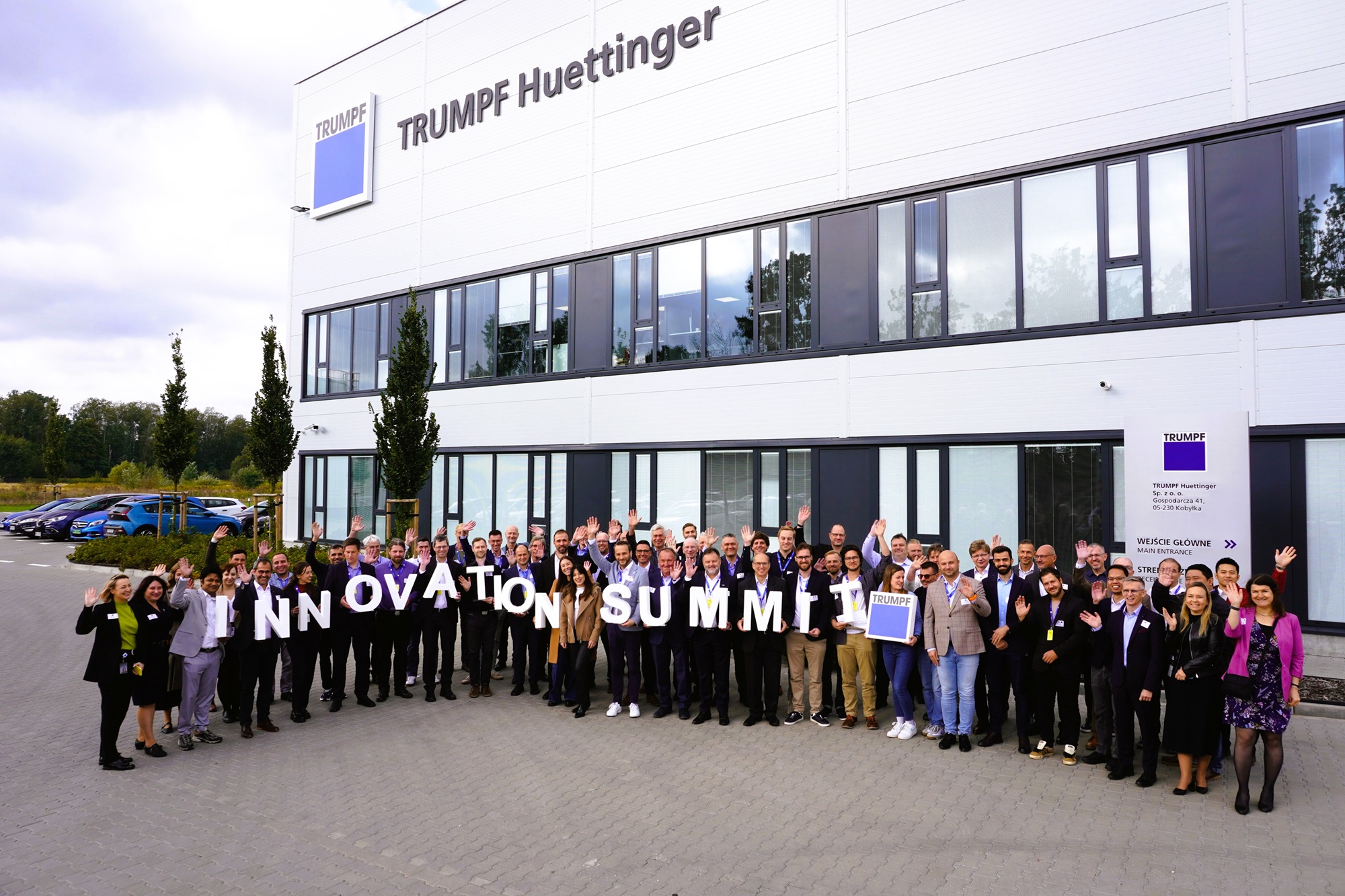
Our Scientist in the Spotlight
Source: MY Turiec and Nikola Marhefková
Kateryna Smyrnova joins COLOSSE to advance research in protective thin films
Kateryna is a materials scientist specializing in the physics of thin films, surface engineering, and nanostructured coatings. She received her Bachelor's and Master's degrees in Physical and Biomedical Electronics from Sumy State University in Ukraine. Later, she pursued her PhD at the Slovak University of Technology in Bratislava, Faculty of Materials Science and Technology in Trnava. She focused on investigating advanced nitride-based coatings for mechanical and oxidation-resistant applications.
Since beginning her scientific journey in 2015, Kateryna has worked in diverse international research groups and interdisciplinary teams. Her research topics have ranged from wear-resistant multilayer and nanocomposite coatings to novel MXene-based materials for tissue regeneration. Designing, synthesizing, and characterizing monolayer, multilayer, nanocomposite, and high-entropy alloy coatings has become her primary area of interest over the years. She is especially interested in creating materials with specific mechanical, tribological, and thermal properties for use in extreme environments, as well as comprehending the relationship between microstructure and performance.
As part of the COLOSSE project, Kateryna is conducting her postdoctoral research under the guidance of Assoc. Prof. Marián Mikula, an expert in hard diboride coatings. She is working on the development of transition metal diboride coatings using advanced physical vapor deposition techniques, including high-power impulse magnetron sputtering (HiPIMS). These coatings are aimed at extending the performance limits of materials in high-temperature and high-load conditions. She is also investigating how changes in deposition parameters affect the resulting microstructure and functional performance of the coatings.
Kateryna was drawn to COLOSSE by its collaborative, interdisciplinary environment and its ambition to push the boundaries of applied surface engineering. She values the opportunity to be a part of a thriving, global research community where innovation and knowledge exchange are mutually beneficial. By becoming a part of COLOSSE, she is expanding her technical knowledge and taking part in professional training activities. Looking ahead, Kateryna intends to continue bridging fundamental research with industrial applications. She is passionate about developing sustainable and high-performance materials for industries such as aerospace and instrumentation.
A new mind at COLOSSE: Dr. Vinicius Cruz San Martin joins CENAM team at the Comenius University
Vinicius studied his bachelor’s degree in Physics and Mathematics at the National Polytechnic Institute (IPN) in Mexico City, where he focused on the deposition and characterisation of thin films of MoO3 by reactive sputtering using different deposition parameters. These thin films were analysed due to the interest on their chromogenic properties, like the film capabilities to change their optical properties according to an external stimulus. Thermo-, photo- and electrochromism effects were studied for these films to observe the change in optical absorption of the films under temperature changes, time of irradiation under UV light or insertion and extraction of ions by electrochemical cyclic voltammetry; respectively.
He later moved to the UK to pursue both his MSc and PhD in Functional Materials at the University of Bristol. His postgraduate studies were focused on the deposition and characterisation of AuAg alloys with different compositions, grown electrochemically by using an environmentally friendly solution. Alloys were characterised and Ag was selectively dissolved electrochemically, resulting in a nanoporous gold structure. Furthermore, after the characterisation of such structures, Vinicius modified electrochemically the porosity size and thus the surface area by applying multiple cycles by cyclic voltammetry.
Now, as part of CENAM at Comenius University, Vinicius focuses on thin films grown by Physical Vapour Deposition techniques for improvement of hydrogen gas sensing and electrocatalysis for hydrogen production. His research interest is to advance green energy technologies through innovative nanomaterial development.
Vinicius is currently working under the supervision of Prof. Tomáš Plecenik, and in close collaboration with our green energy expert, Ľubomír Staňo.
Welcome, Vinicius! We are thrilled to have you on board.
CENAM meets RHP
Earlier this month, our colleagues from CENAM, Comenius University, met with the team from RHP Technology GmbH, an austrian company specializing in advanced powder technologies, additive manufacturing, and surface engineering.
RHP is a key player in the development of innovative material solutions — from powder processing and sintering to additive manufacturing and functional coatings — serving sectors like aerospace, automotive, and energy. Their focus on high-performance materials and scalable technologies closely aligns with the research directions of COLOSSE.
During our meeting, both teams presented their technology offers, explored shared interests, and found strong synergies in the fields of thin-film deposition, surface functionalization, and vacuum technologies. Beyond exchanging ideas, we outlined the first contours of a potential collaboration roadmap, with exciting possibilities for joint development.
Condensed Matter meets Quantum Physics: Internship Experience at CERN ATLAS
Newton started physics as we know it by noting that interactions affect the motion of objects, "Mutationem motus...". Sometimes interaction effects can be described by successive corrections in perturbation theory, but other times interactions lead to non-perturbative qualitative changes especially when the interactions act not within classical physics started by Newton but within quantum physics started about hundred years ago as honored this year by UNESCO. Prominent examples of non-perturbative effects in condensed-matter physics are crystalline, magnetic, superconducting or other kinds of ordering, the plasma state, and also topologically characterized states of matter currently studied also for their application potential for robust quantum computing. Šimon Kos during a three-week stay at the CERN ATLAS collaboration was exploring possible connections to non-perturbative topological effects in elementary-particle physics, specifically strong-interaction instantons. Mutual inspiration between condensed matter and elementary particles has decades-long tradition with arguably the most spectacular example being the Higgs mechanism taking place both in superconductivity and in the electro-weak sector of the elementary particles Standard Model. Although the behavior of elementary particles as the world's smallest objects is generally well within the quantum realm, especially when the behavior is perturbative, the instantons are, in fact, semi-classical objects and as such also giving insight into the interplay between the quantum and the classical, which is also relevant for the application of quantum technologies in our macroscopic classical world.
The University of West Bohemia in Pilsen has been for a number of years a technical associate institute of the CERN ATLAS Collaboration based on the involvement of the group headed by Vjačeslav Georgiev at the Faculty of Electrical Engineering. This visit has been a part of the effort of expanding the collaboration from electrical engineering into physics, specifically with theory input into the analysis team at ATLAS, with the potential of UWB becoming a CERN member institution. The main person I visited there was Tomáš Sýkora of the Faculty of Mathematics and Physics of the Charles University in Prague as a member institution. We discussed the strong-interaction instantons also with Michelangelo Mangano, a staff member at the CERN Department of Theoretical Physics, with Bennie Ward, a visiting scientist at the Department of Theoretical Physics from the Baylor University in Waco, Texas, USA, and Riccardo Rattazzi, visiting ATLAS from the Ecole Polytechnique Federale de Lausanne. We have discussed the possible experimental signatures of the instanton in particle diffraction with Karel Černý from the Palacký University in Olomouc as another member institution. All these discussions and findings may contribute to plasma-based surface engineering of a new class of materials, and hopefully lead to the design of new projects that investigate these topics more intensively.
Internship Experience at Linköping University
Accelerating ions toward insulating surfaces in HiPIMS (High-power Impulse Magnetron Sputtering) is particularly challenging, especially when conventional biasing methods are not applicable. As part of a six-week research internship at Linköping University under the supervision of Dr. Daniel Lundin, PhD student Mina Farahani conducted experimental deposition studies using HiPIMS method to explore how different pulse configurations (unipolar, bipolar, and a novel chopped bipolar HiPIMS) and changes in ion energies associated with them affect the deposition on insulating surfaces, particularly Aluminum Nitride (AlN). Thin films were deposited with next-generation power supplies and later analyzed to investigate variations in structural properties resulting from each configuration.
This work builds on previous experimental diagnostics carried out by the research team at the University of West Bohemia in Pilsen, published in the letter "On unipolar and bipolar HiPIMS pulse configurations to enhance energy flux to insulating surfaces." This study represents a step toward overcoming the limitations of ion acceleration in HiPIMS for depositions onto insulating surfaces, advancing the development of more precise and effective thin-film deposition techniques through innovative pulse engineering.
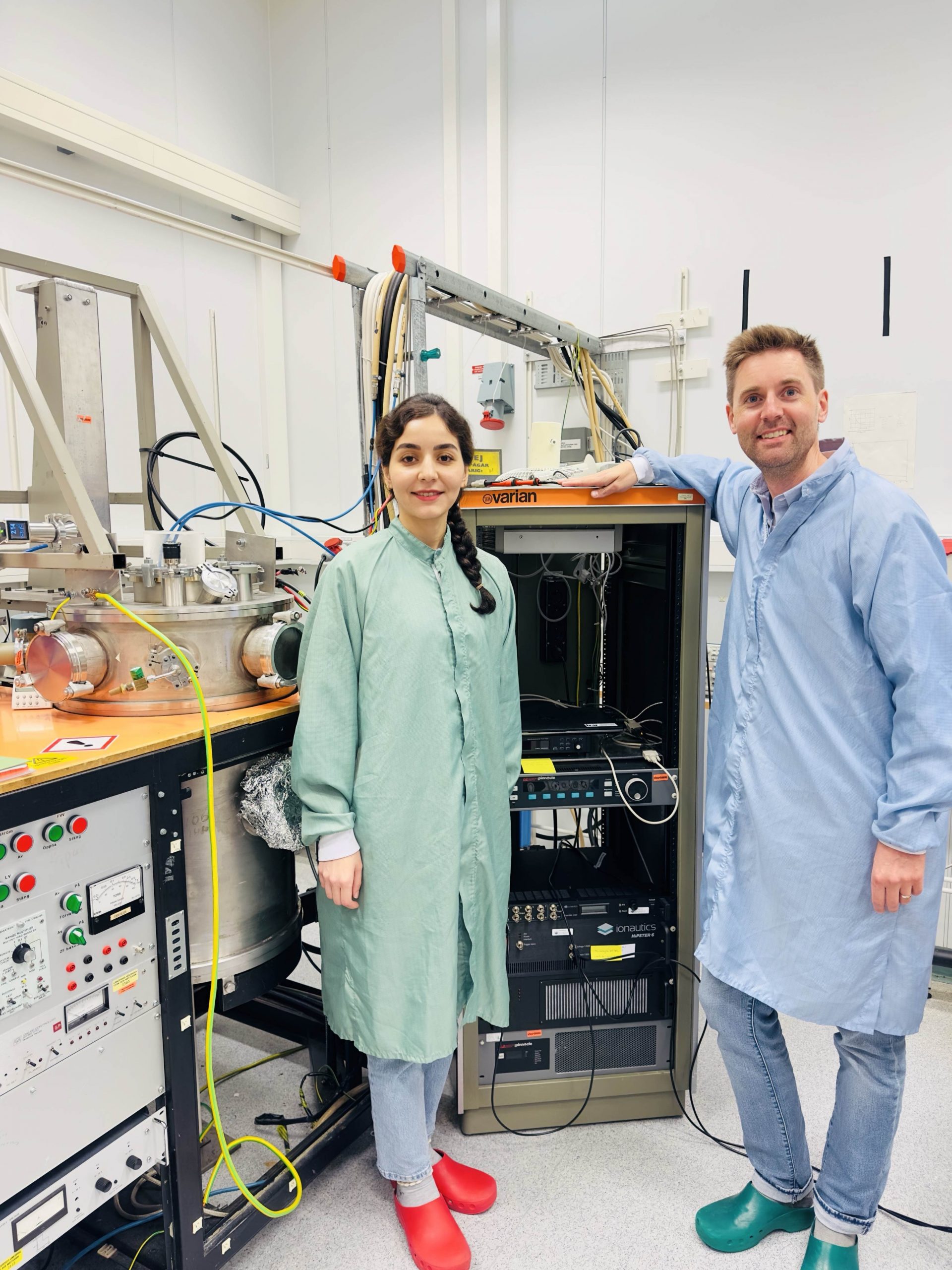
COLOSSE mobility and beam time at European Synchrotron Radiation Facility (ESRF)
In May 2025, Mgr. Marek Vidiš, PhD. participated in a beam time session at the European Synchrotron Radiation Facility (ESRF) in Grenoble, France. The experiments were conducted in collaboration with the scientific group of Professor Jozef Keckes from Montanuniversität Leoben, who also serves as a group leader at the Erich Schmid Institute of Materials Science (Austrian Academy of Sciences).
The primary focus was on the structural characterization of advanced thin film materials using the nanofocus extension of the ID13 beamline. The X-ray beam with a diameter of 60 nm enabled high-resolution spatial mapping of strain and texture across thin film cross-sections with sub-micron precision. The outcomes are expected to contribute to broader scientific advancements in the field of functional coatings.
The ESRF visit and collaboration represented a successful step in the COLOSSE project, reinforcing long-term cooperation with Professor Keckes’s group and opening the door to joint publications and future beam time proposals.
The First COLOSSE Mobilities Are Underway: Katarína Viskupová Completed a Research Stay at RWTH Aachen
The first research stays within the COLOSSE project are already taking place! In April 2025, fourth-year PhD student Mgr. Katarína Viskupová completed a one-month research stay at the Faculty of Materials Chemistry at RWTH Aachen University, under the supervision of Professor Jochen Schneider.
During her stay, she focused on the preparation of a Cr-Al-C MAX phase with added yttrium, aiming to investigate its effect on the oxidation resistance of the material. In parallel, she also worked on analyzing the 3D elemental distribution in V-W-B coatings using Atom Probe Tomography (APT).
This experience not only contributed to her dissertation research but also strengthened collaboration between the Slovak and German partners within COLOSSE.
